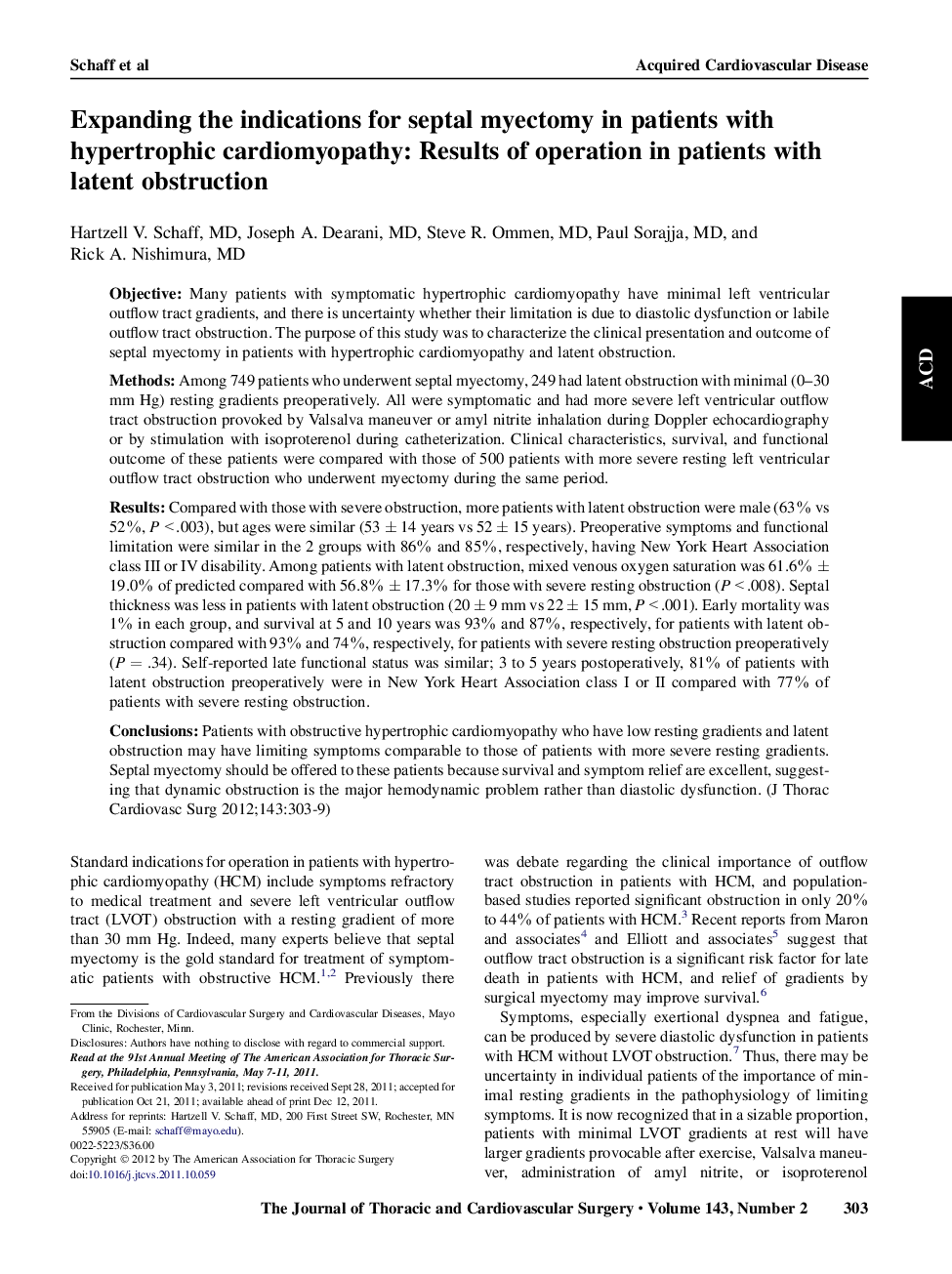| Article ID | Journal | Published Year | Pages | File Type |
|---|---|---|---|---|
| 2981440 | The Journal of Thoracic and Cardiovascular Surgery | 2012 | 7 Pages |
ObjectiveMany patients with symptomatic hypertrophic cardiomyopathy have minimal left ventricular outflow tract gradients, and there is uncertainty whether their limitation is due to diastolic dysfunction or labile outflow tract obstruction. The purpose of this study was to characterize the clinical presentation and outcome of septal myectomy in patients with hypertrophic cardiomyopathy and latent obstruction.MethodsAmong 749 patients who underwent septal myectomy, 249 had latent obstruction with minimal (0–30 mm Hg) resting gradients preoperatively. All were symptomatic and had more severe left ventricular outflow tract obstruction provoked by Valsalva maneuver or amyl nitrite inhalation during Doppler echocardiography or by stimulation with isoproterenol during catheterization. Clinical characteristics, survival, and functional outcome of these patients were compared with those of 500 patients with more severe resting left ventricular outflow tract obstruction who underwent myectomy during the same period.ResultsCompared with those with severe obstruction, more patients with latent obstruction were male (63% vs 52%, P < .003), but ages were similar (53 ± 14 years vs 52 ± 15 years). Preoperative symptoms and functional limitation were similar in the 2 groups with 86% and 85%, respectively, having New York Heart Association class III or IV disability. Among patients with latent obstruction, mixed venous oxygen saturation was 61.6% ± 19.0% of predicted compared with 56.8% ± 17.3% for those with severe resting obstruction (P < .008). Septal thickness was less in patients with latent obstruction (20 ± 9 mm vs 22 ± 15 mm, P < .001). Early mortality was 1% in each group, and survival at 5 and 10 years was 93% and 87%, respectively, for patients with latent obstruction compared with 93% and 74%, respectively, for patients with severe resting obstruction preoperatively (P = .34). Self-reported late functional status was similar; 3 to 5 years postoperatively, 81% of patients with latent obstruction preoperatively were in New York Heart Association class I or II compared with 77% of patients with severe resting obstruction.ConclusionsPatients with obstructive hypertrophic cardiomyopathy who have low resting gradients and latent obstruction may have limiting symptoms comparable to those of patients with more severe resting gradients. Septal myectomy should be offered to these patients because survival and symptom relief are excellent, suggesting that dynamic obstruction is the major hemodynamic problem rather than diastolic dysfunction.
